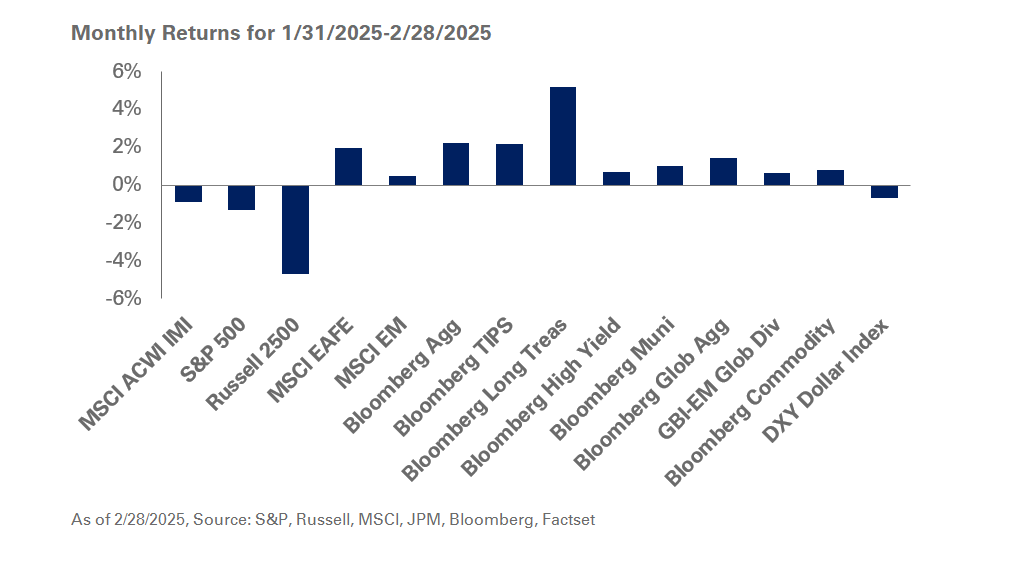It was the summer of 2007. A Bear Stearns hedge fund, largely invested in sub-prime mortgage-backed securities, faced a margin call. I was in New York that day, meeting a friend who was very close to the situation. “The financial world, as we know it, may never be the same,” he said. Little did I know how prescient those words would be.
The Great Financial Crisis spanned nearly two years and touched virtually every corner of financial markets and investment portfolios. For private wealth investors, it challenged established perceptions of risk and liquidity. It shook their very foundation of portfolio construction. The Crisis created distress and strife within families and, at times, across generations, as differences in risk tolerances and spending needs were laid bare.
At NEPC, we believe advisors need to be an anchor for their clients in times of market extremes, urging investors to stay focused on their long-term goals. This holds true not only during periods of stress, but also euphoria. As consultants, it is our responsibility to dissuade our clients from throwing in the towel and liquidating portfolios out of fear and doubt. At the same time, it is also our duty to remind clients to stay the path and not over commit to an overvalued asset class out of greed when markets are on a tear. To this end, investors who remained focused on long-term results and rebalanced thoughtfully during the Crisis have been generously rewarded in its aftermath as markets rebounded.
Looking back, the Crisis impacted the very core of wealth management: asset allocation, the building block of all investment holdings. The guiding principle of asset allocation has long relied on the concept of correlations, that is, the measurement of how different investments move in relation to one another. Portfolios were constructed with the belief that these correlations would hold up in times of extreme volatility and diversification across different investments would protect a portfolio from sharp declines. The problem with this theory is that in times of extreme market stress, investments that rarely moved together began to correlate, resulting in greater than expected portfolio drawdowns. The new normal of portfolio construction now also considers how different investments correlate in times of extreme market volatility or financial stress.
The Crisis also brought to the forefront the issues of liquidity and risk. For NEPC’s private wealth clients, this means a clear understanding of one’s spending needs and the portfolio’s ability to have the liquidity required to meet those spending goals. To this end, we recommend investors relying on their portfolio for living expenses have at least 18-to-24-months’ worth of spending needs invested in assets that would not be impaired in times of even extreme market dislocation. For many private wealth investors, the Crisis forced them to confront their threshold for risk with some scaling back. In yet other instances, family members realized that their risk tolerance was different from others in the family; this not only created internal conflict but, at times, required that assets be divided to accommodate different asset allocations due to varied risk tolerances among family members.
To be sure, there was a silver lining: Investors who kept sight of their longer-term goals and rebalanced with discipline have been rewarded in the 10 years following the Crisis, with capital markets staging a robust comeback. While rebalancing, it has been useful for taxable investors to take a thoughtful approach to harvesting losses. Short-term losses—the most valuable to taxable investors—should be the first to harvest. Gifting strategies are also useful to taxable investors during market turmoil. This approach is applicable to not only charitable giving, but also to estate planning; when stocks are trading at their lowest levels, astute investors transfer wealth to the next generation, effectively offloading more of their wealth while asset prices are deeply undervalued.
Looking ahead, it is easy for complacency to take over as the Financial Crisis retreats into the rear-view mirror. That said, we would like to remind our clients that uncertainty remains. To this end, we urge our clients to secure their liquidity position, exercise discipline around rebalancing, and regularly assess portfolio risk.
For NEPC’s complete coverage of the 10-year anniversary of the Financial Crisis, click here.



